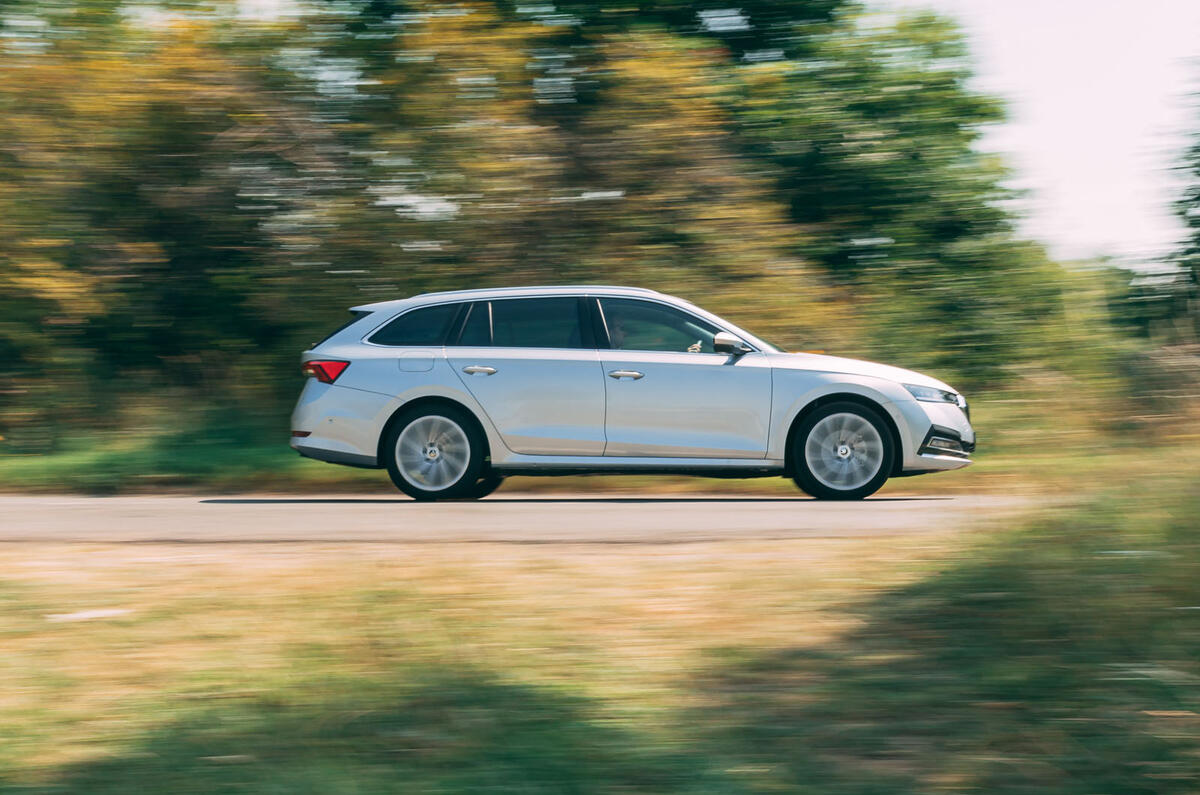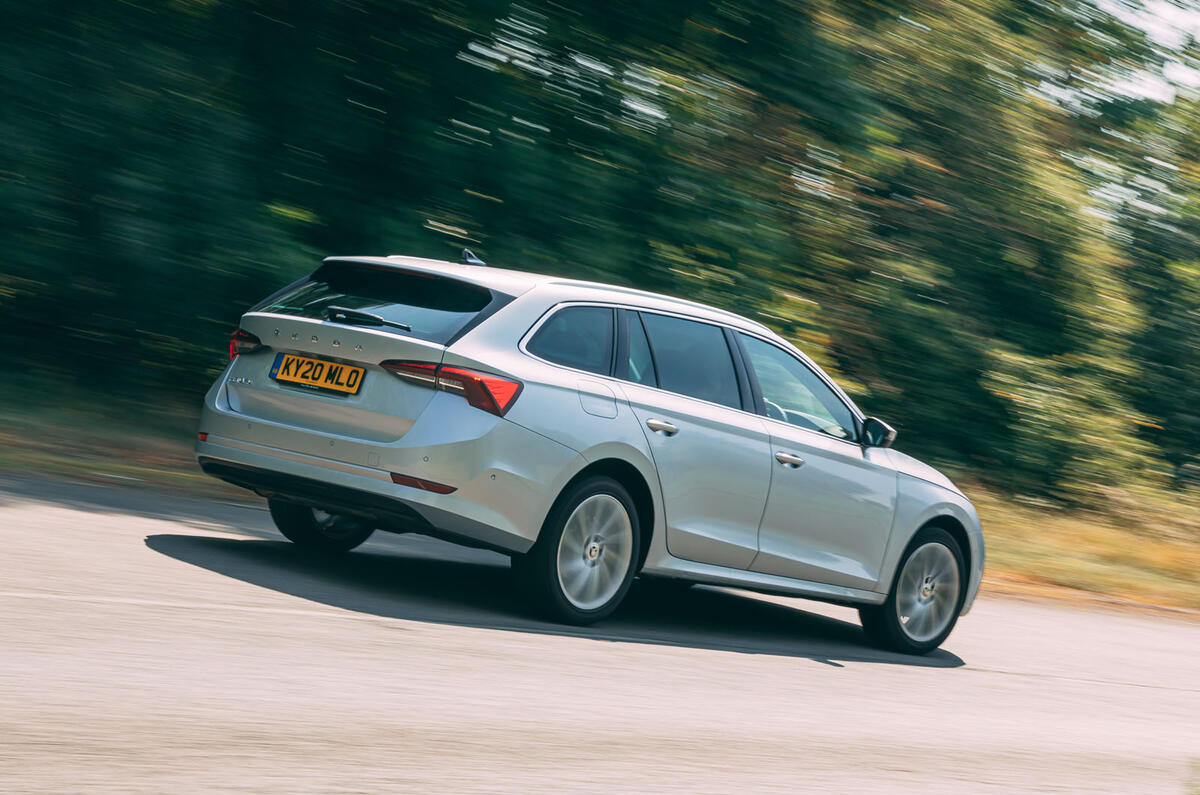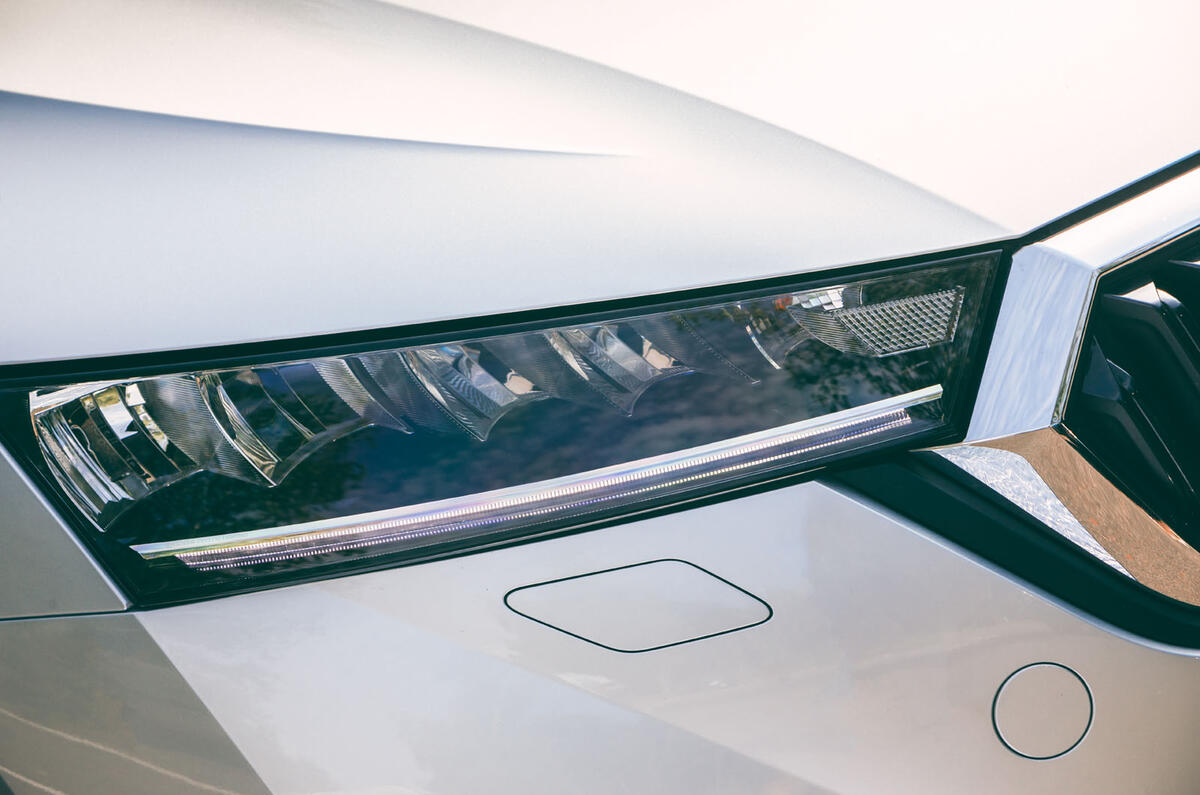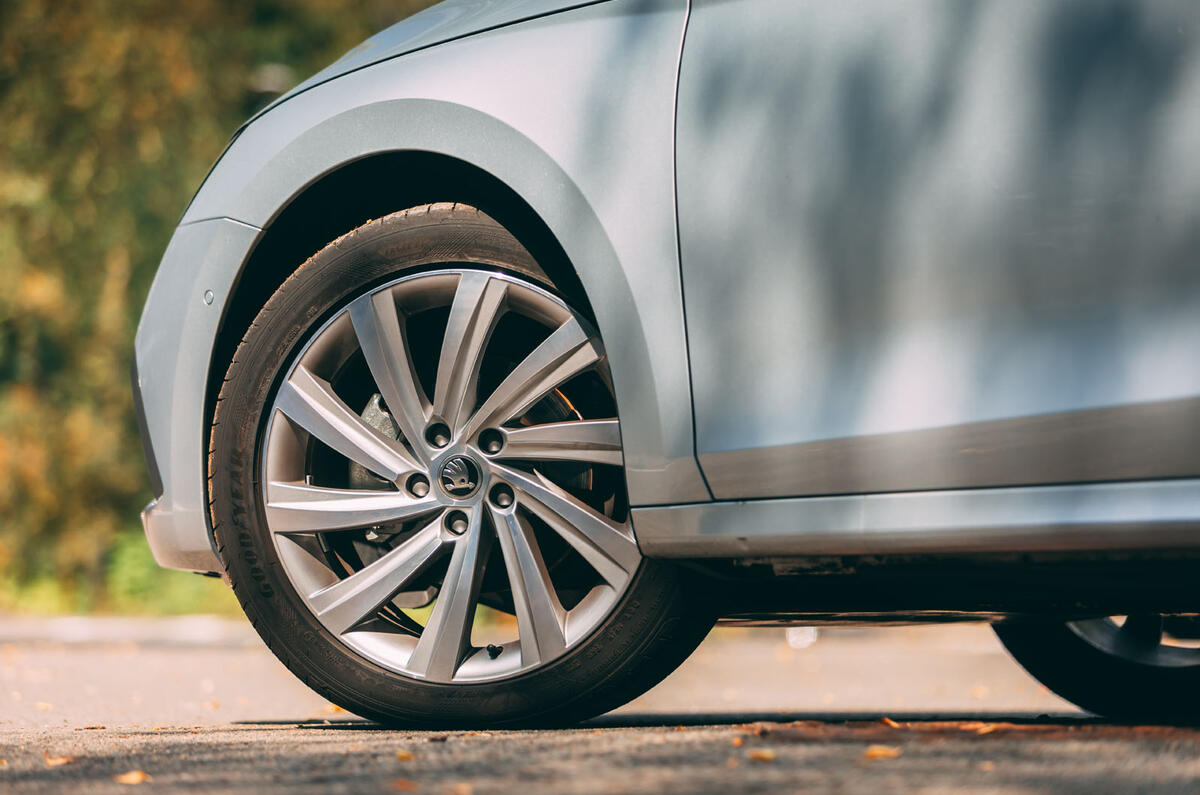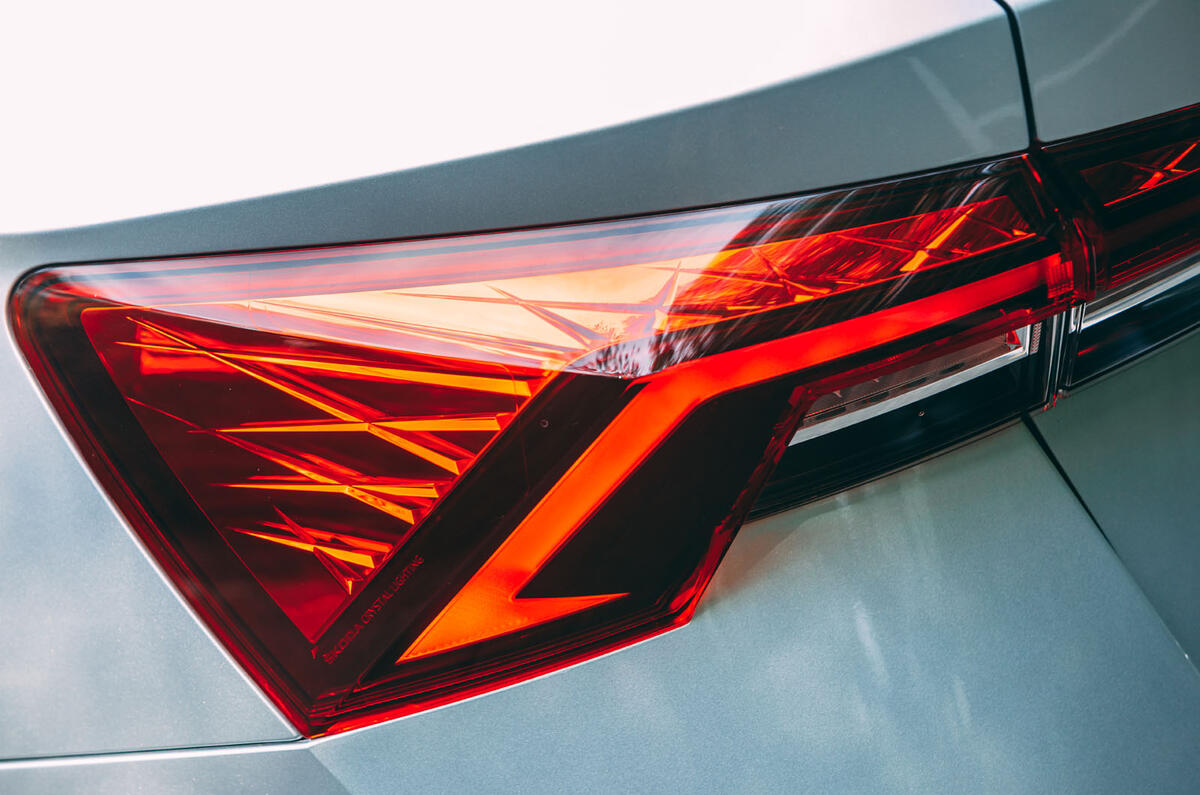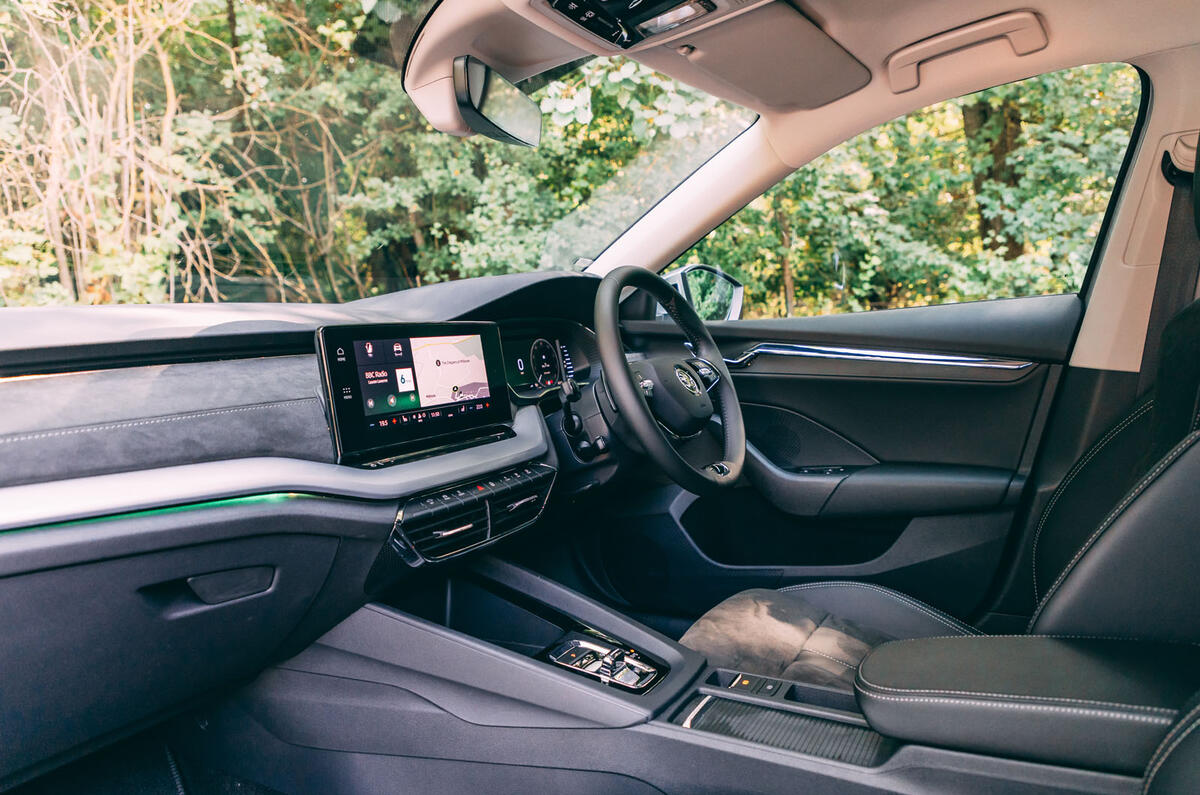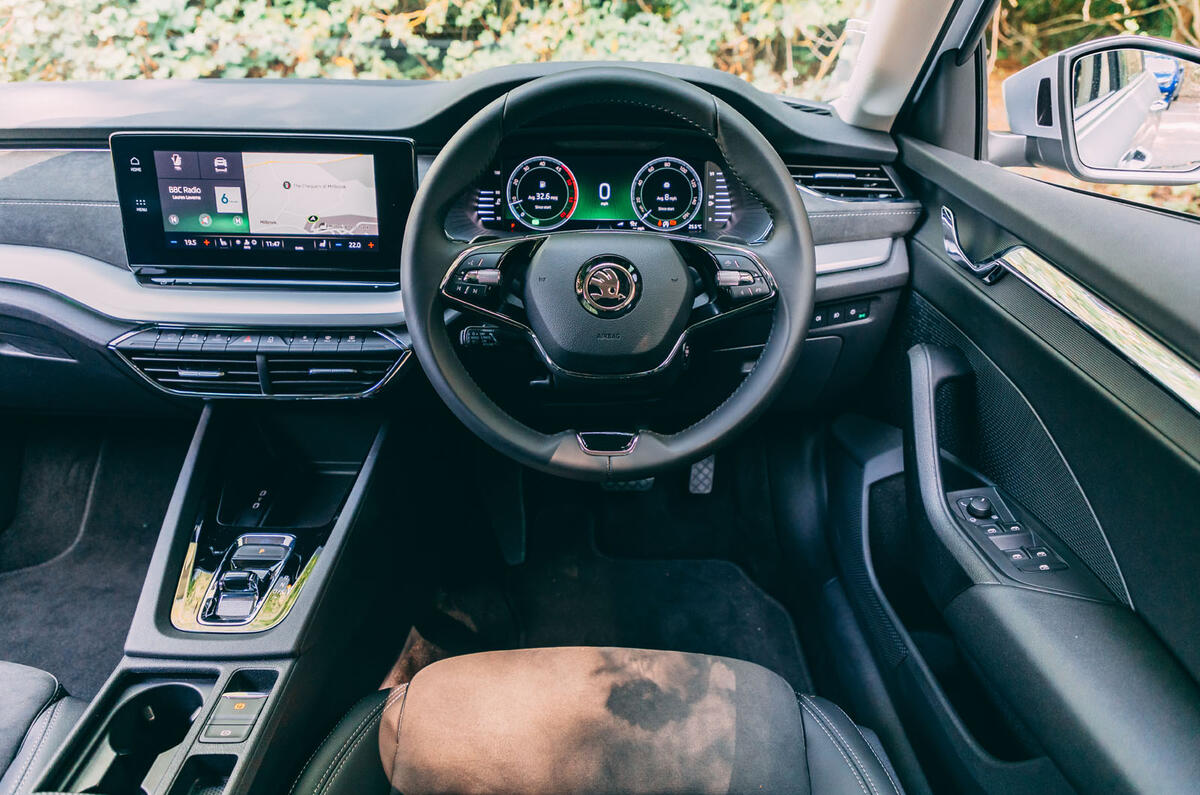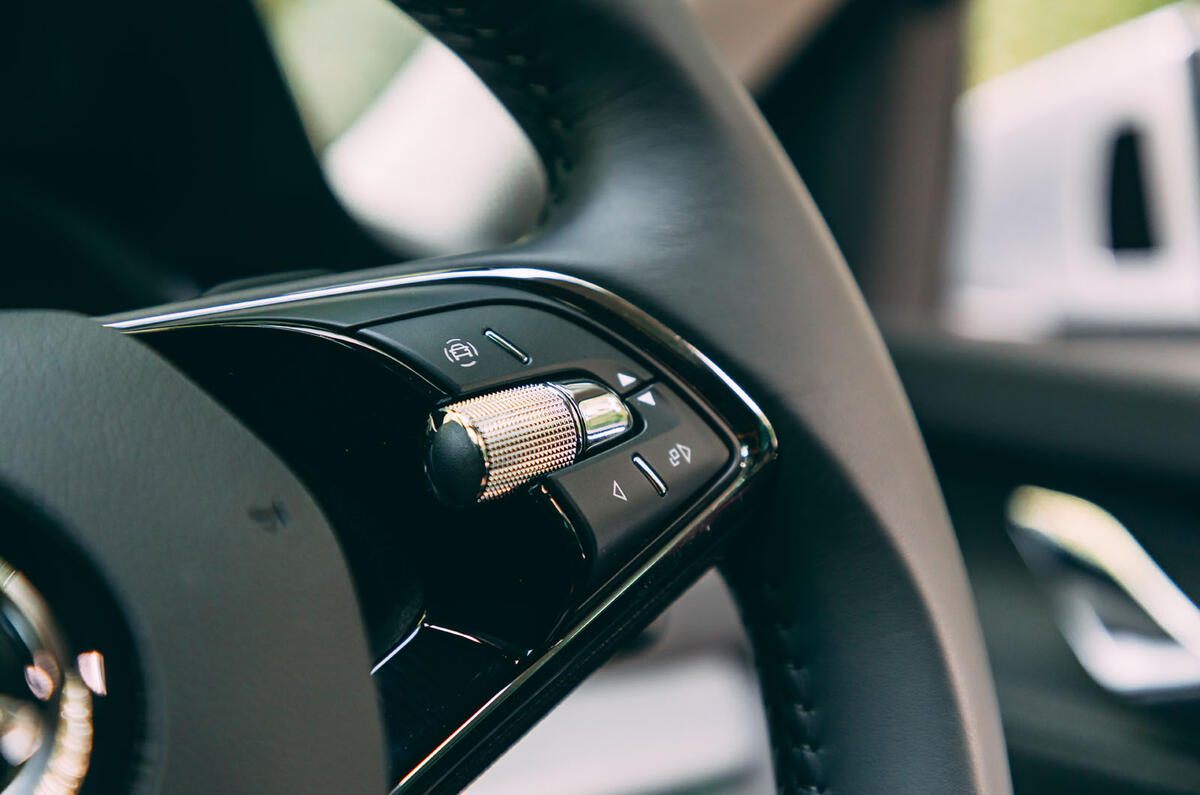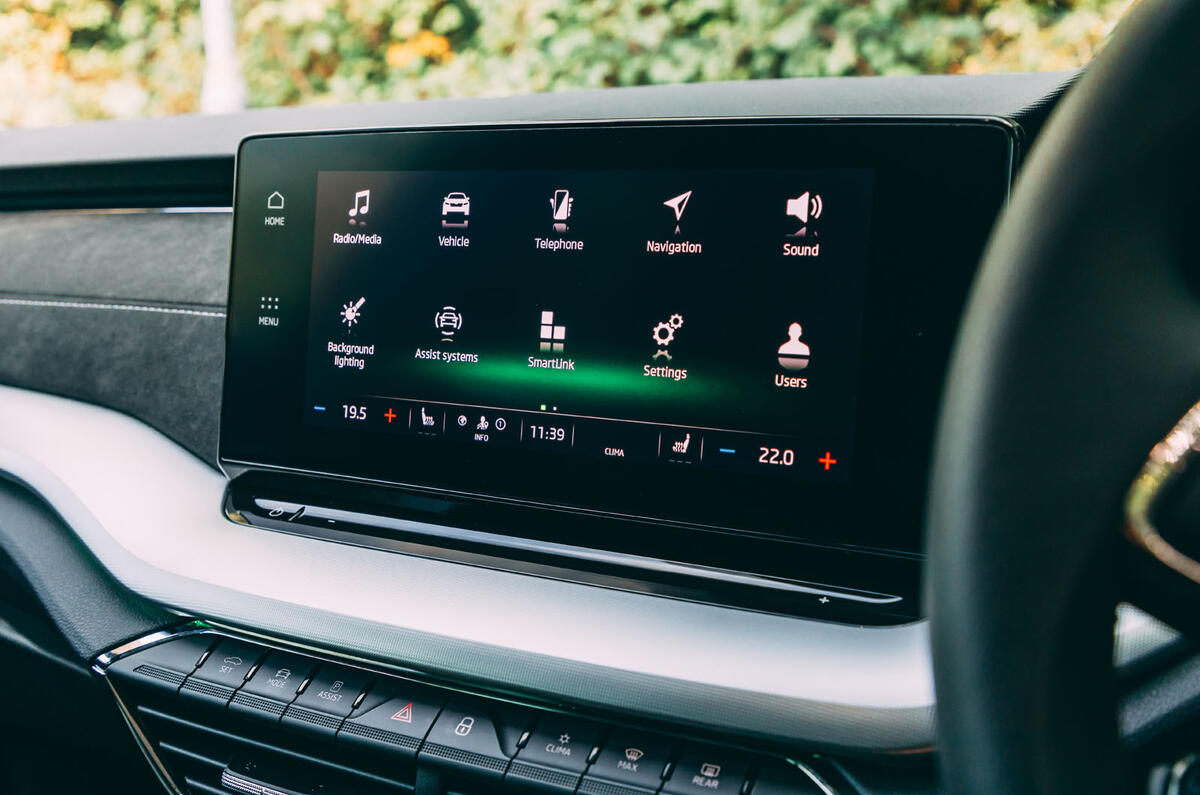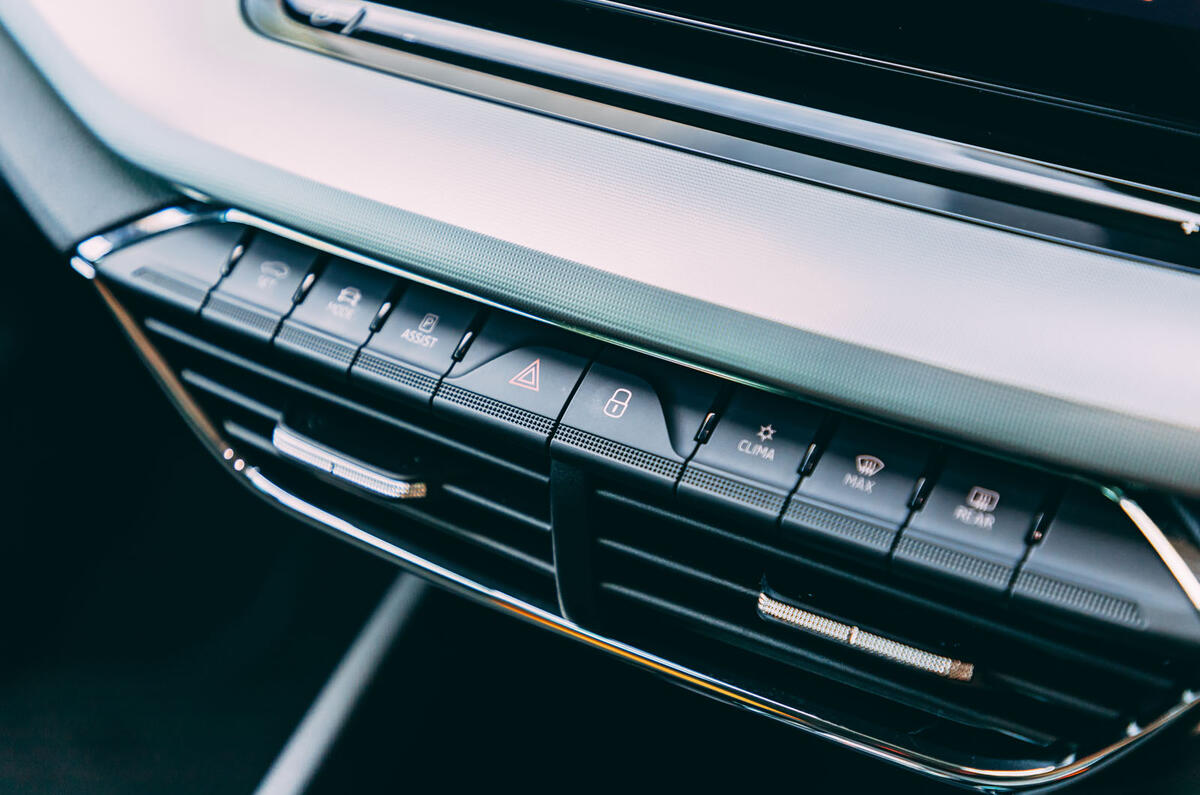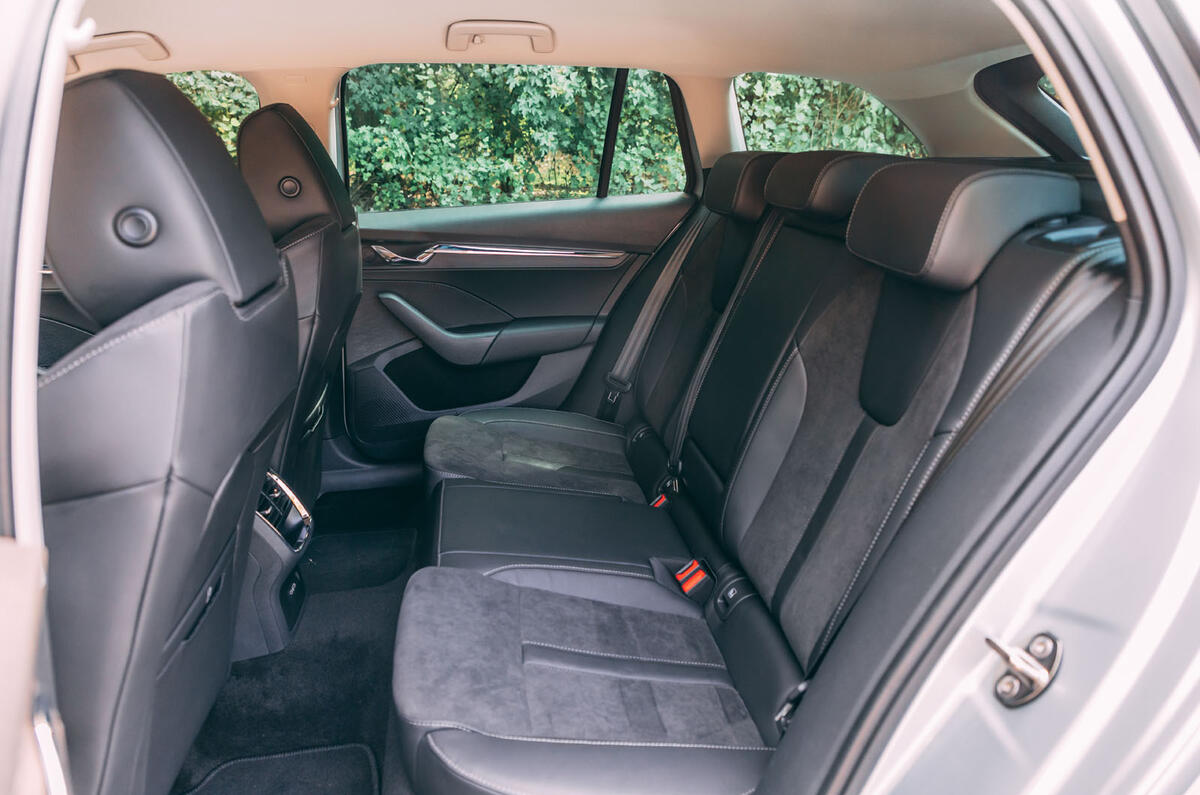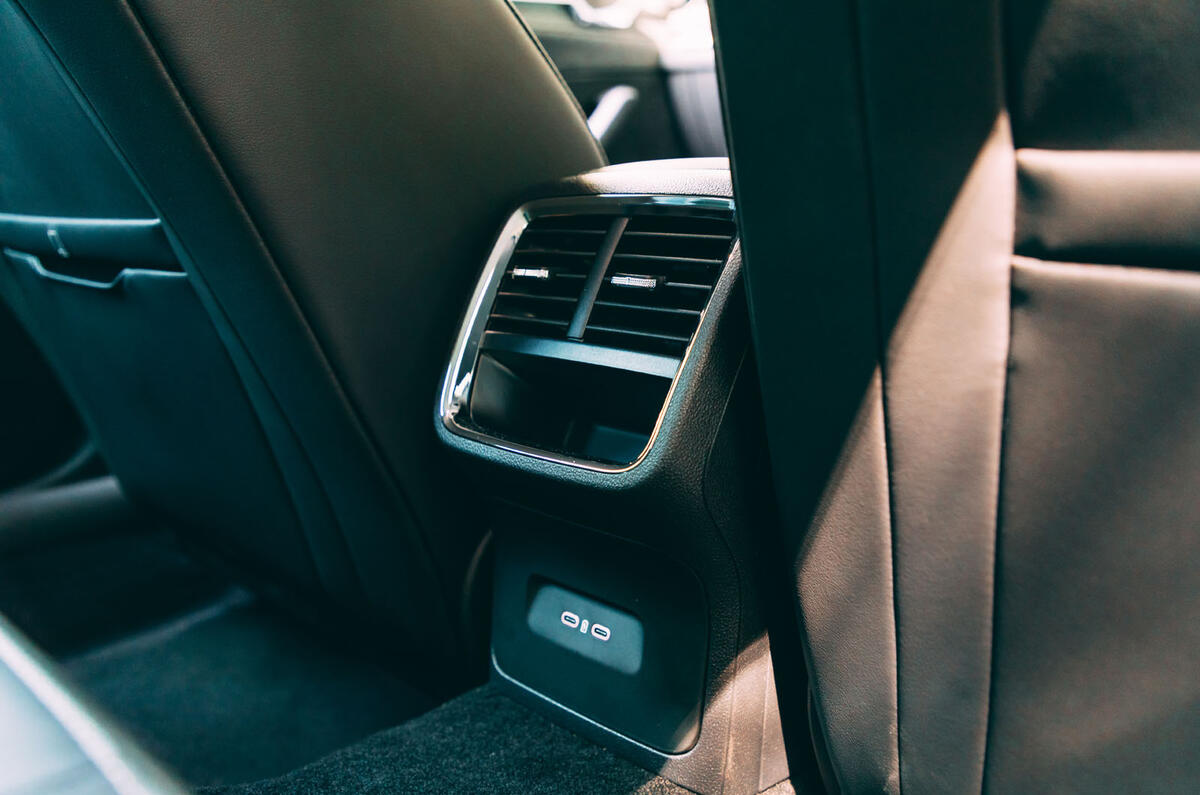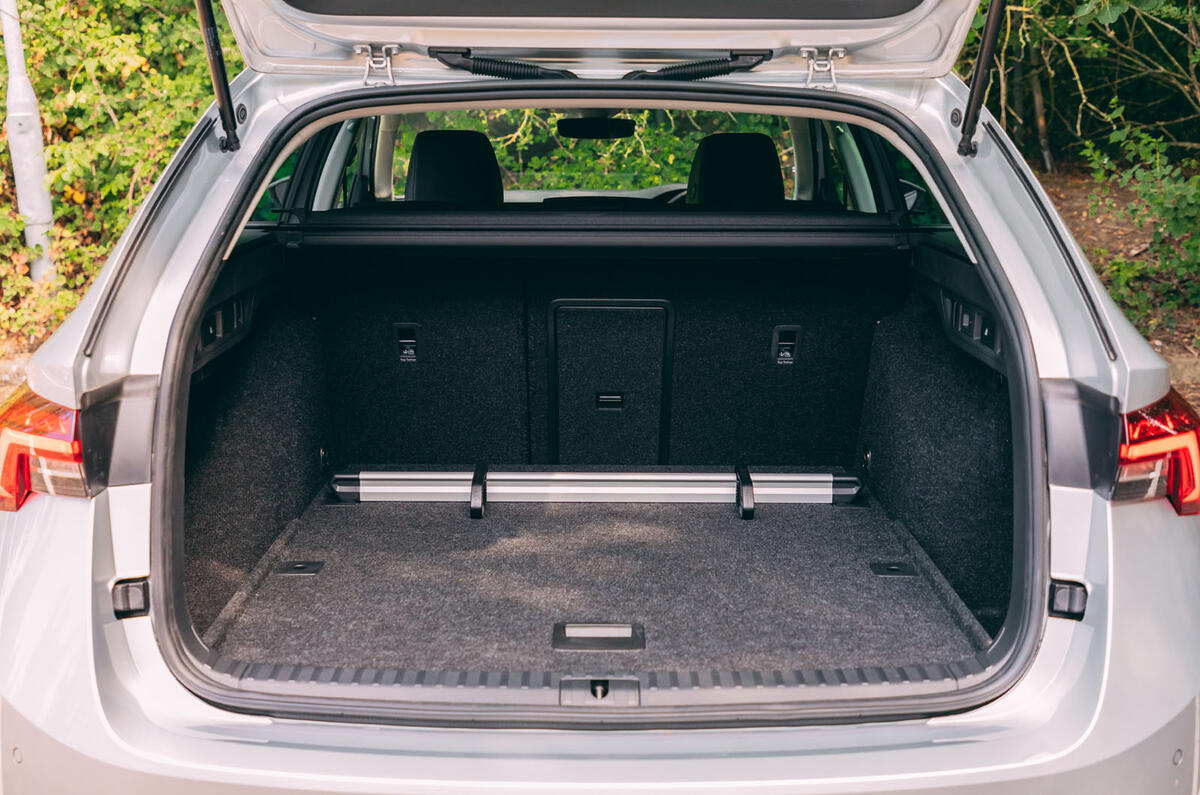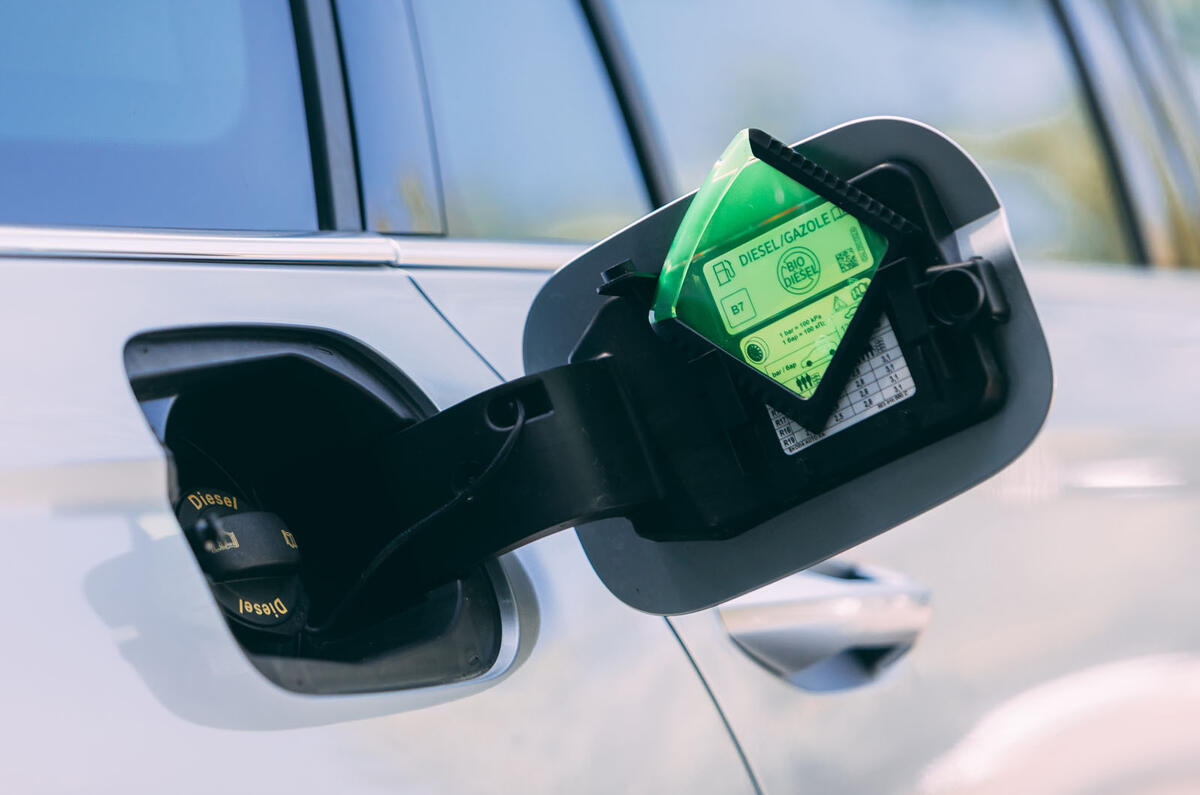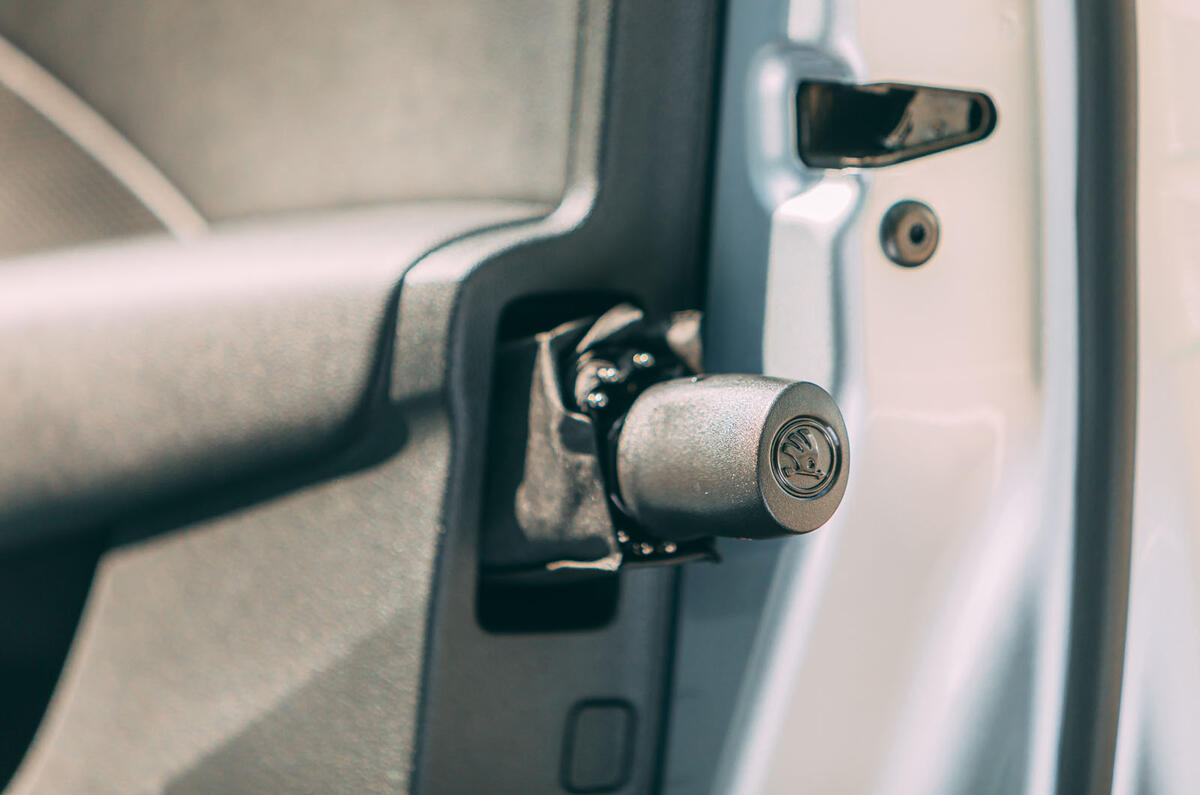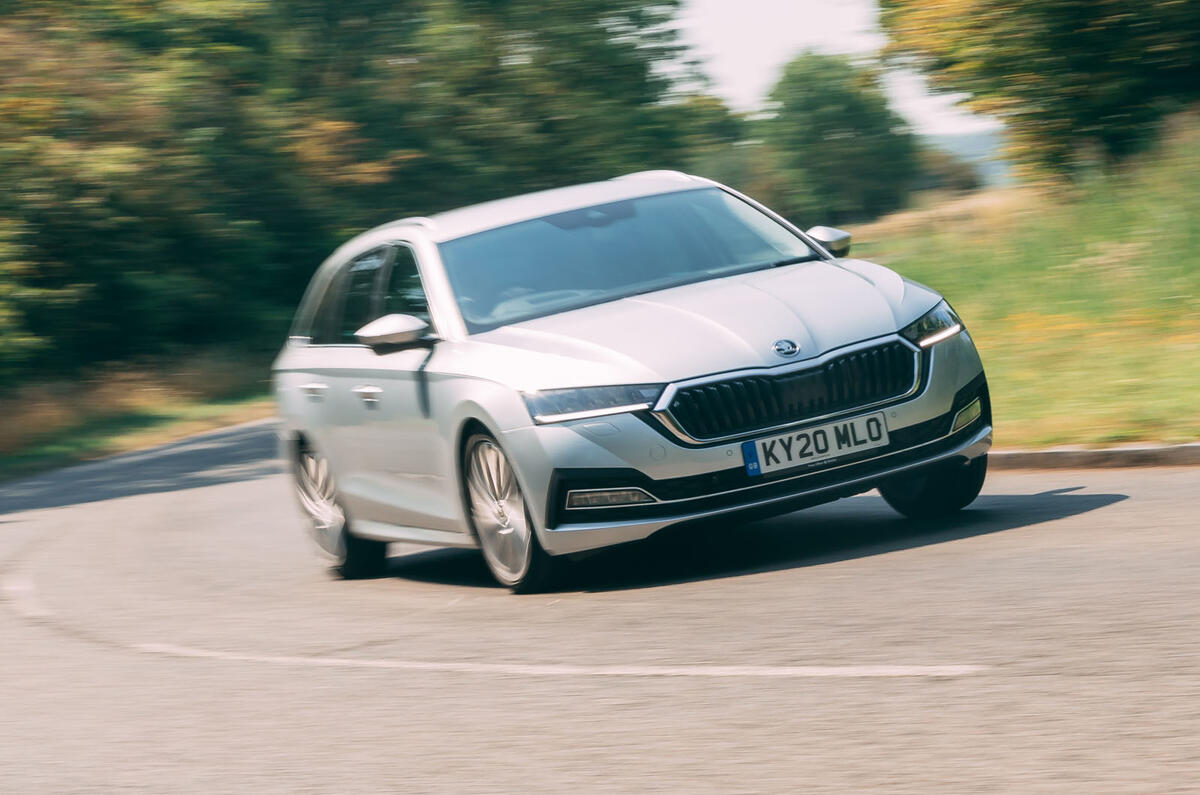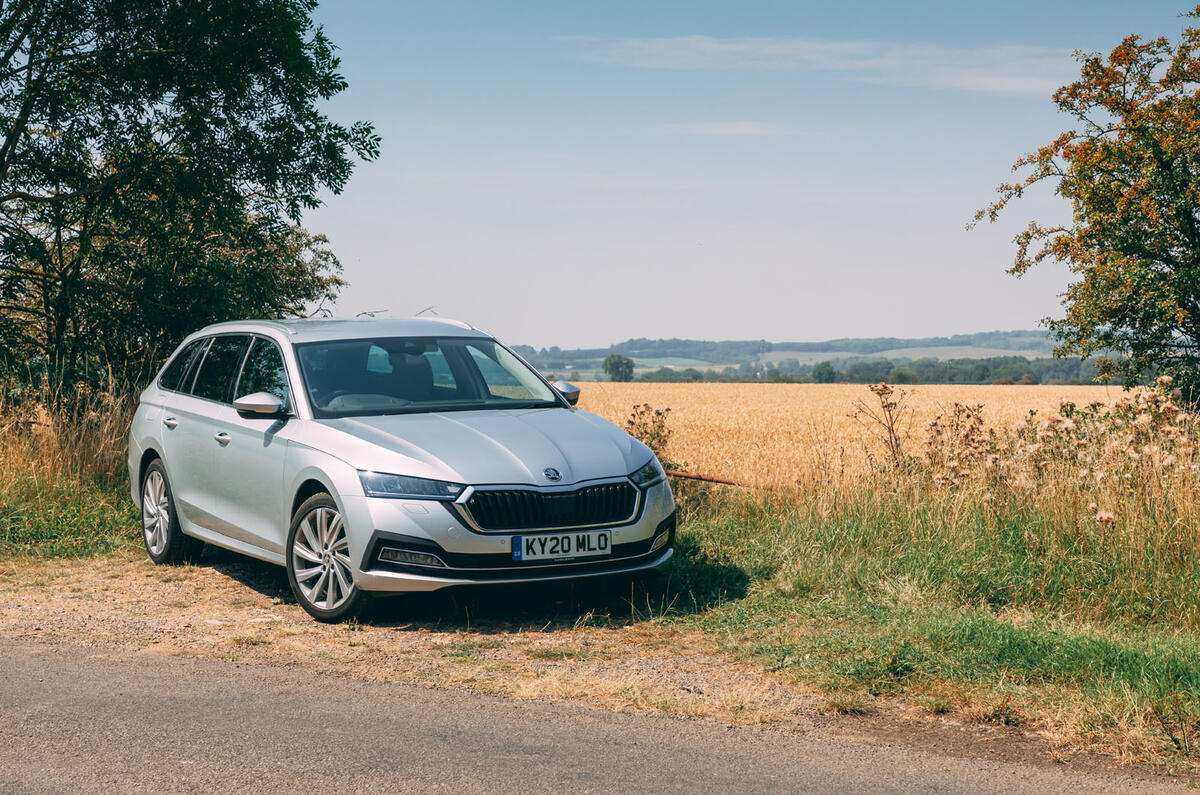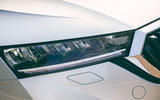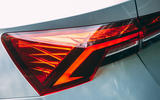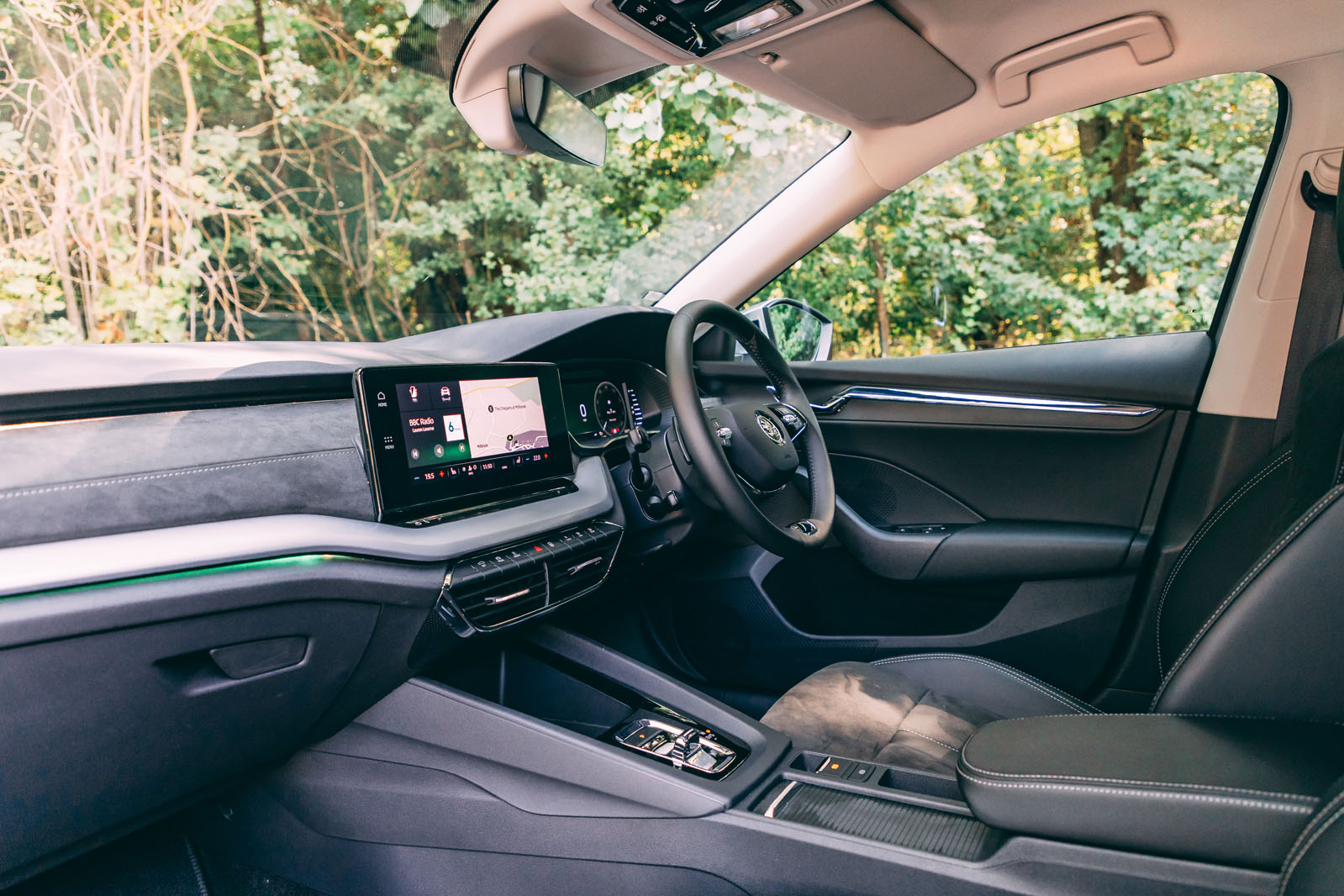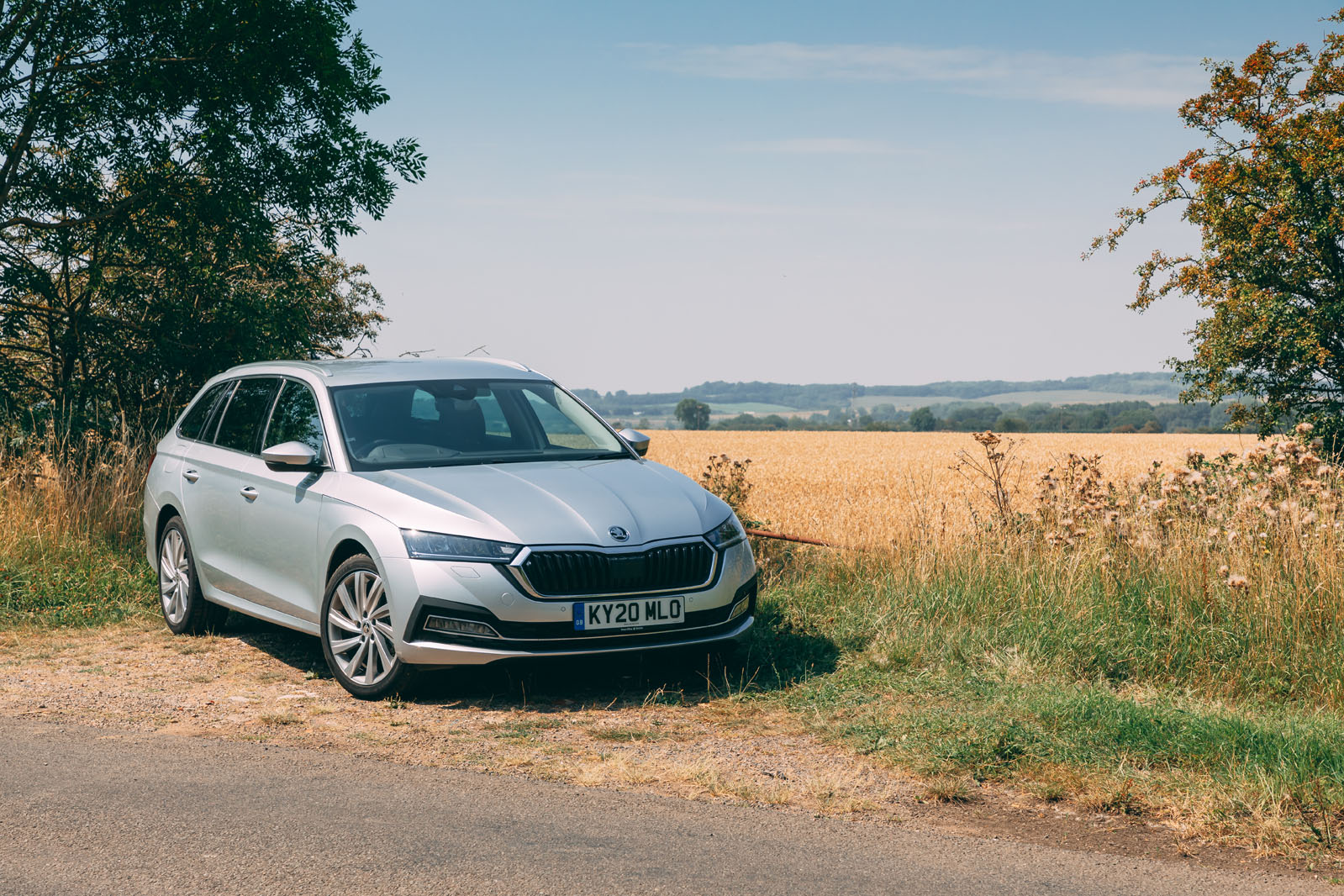Skoda’s approach to interior design has really come along in leaps and bounds. Where no-nonsense practicality and outright usability have long been the calling cards of the Czech brand’s cabins, the fourth-generation Octavia builds on that by throwing in a healthy extra dose of material flair and technological sophistication.
So the dash-top of our range-topping SE L First Edition test car is partly covered in a smart microsuede material, while soft-touch moulded plastics and part-leather upholstery are used to lift the tactile appeal of the Octavia to impressive heights. Much like its VW Group siblings, the new Octavia employs a decidedly more minimalist interior layout, with the vast majority of controls (such as those for the heating and ventilation, rather annoyingly) now integrated into the 10.0in infotainment touchscreen that protrudes from the central dashboard plateau.
Ostensibly, it really is a smart-looking environment in which to spend time, and a few of our testers even said they preferred the look and general feel of the Octavia’s cabin to that of the latest Audi A3.
As with the Audi, however, there is a sneaking suspicion that some of the Octavia’s previous solidity has been sacrificed in the pursuit of sharper digital screens and more superficially appealing surface treatments. The row of physical shortcut buttons that run beneath the screen feel slightly cheap and flimsy, and a few well-placed pokes and prods will unearth creaks and groans lower in the cabin.
Even so, for the most part, the Octavia hasn’t compromised on usability. The slightly perched driving position is comfortable, as are the chairs themselves, and there’s plenty of adjustability in the seat base and steering column. Passengers in the second row are well catered for in terms of typical leg room and maximum head room, with 700mm and 970mm to play with respectively. For comparison, the new Volkswagen Golf has just as much room for your knees, but the top of your head will be 20mm closer to the rooflining.
The Octavia’s boot remains its standout party piece. With the second row in place, there’s a cavernous 640 litres of storage space on offer, accessed via an aperture that measures a full metre across at its narrowest point. Collapse the seats and you can liberate up to 1700 litres of load bay capacity.
Skoda Octavia Estate infotainment and sat-nav
Entry-level SE First Edition models are equipped with Skoda’s 8.0in touchscreen infotainment system as standard, whereas SE Technology, SE L and our SE L First Edition test car gain larger, 10.0in Columbus displays.
The system generally looks smart and operating basic features while stationary is relatively easy, although the navigation pathways to access some of the Octavia’s safety systems aren’t quite as intuitive as you might like.
On the move, it can be a stretch to reach the two capacitive home screen and menu buttons that are positioned on the screen’s left-hand border. This is obviously a design feature geared more towards left-hand drive markets, and it’s a pity that it hasn’t translated quite so well to cars sold in the UK.
The integration of heating and ventilation controls into the screen is also a source of slight annoyance, even with the small temperature control buttons that remain along the screen’s lower edge at all times. Simple dials would be far easier and safer to use while driving.



